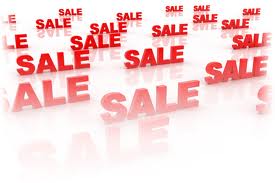
 WEB EXCLUSIVE
WEB EXCLUSIVE
Price yourself back
into the market
The downturn in retail sales has resulted in many retailers around the world discounting to survive. However, this isn't a strategy that's built to last and many retailers are in danger of pricing themselves out of the market.
Jan. 6, 2011 – The downturn in retail sales has resulted in many retailers around the world introducing a discount strategy to try and survive. This strategy is a relatively short-term measure and many retailers were hoping the downturn would be a short-lived phenomena. The downturn, in many countries, has been longer than most experts predicted and the discount strategy has now completed its life cycle. Purchasing at a discounted price has become a norm for many consumers and it is time to break the cycle for many businesses to develop.
To continue a discount retail strategy will result in more retail businesses closing their doors for good and reduce the choice available to the consumer.
So where does the retailer go from here in the pricing game?
1)Percent-off Sales
A number of ideas have come to light over the last few months that could help us rethink how we price products and get consumers to start buying again.
The January sales seem to be starting earlier and earlier. I was in Germany in mid-December and they had already started in the clothing sector, even before the Christmas rush of shopping. What intrigued me was that it was obvious that a sale was taking place, but it was not obvious how big the sale offer was. Gone were the 50 per cent off, 70 per cent off signs that I discussed on my internet TV program Retail Globe Report in the past twelve months. These were replaced with a “%” signs over products and on promotions. The consumer actually had to look at the individual price signs to gauge the discount. This meant that the retailer could alter the discount as they felt appropriate.
This was a common retail technique across the whole of retailing and was not just the odd store that has taken on this practise. What I liked about the system was that it caught the consumers’ eye, encouraged them into the store and forced them to be more focused on their browse shopping. One store I went into cleverly placed the products. The new, full priced products were displayed at the front of the store and the biggest discounted sale items were located to the rear of the store.
2) Decoy Pricing
This is a technique that has proved to work in the restaurant industry and I am sure will work for some other retailers. I came across it in a blog by Roger Dooley entitled “Neuro-Menus and Restaurant Psychology.”
The principle is that you price an inferior product at a close price point to a genuine great quality product with the aim of boosting sales of the higher priced product. The two products need to be located near to each other to enable the consumer to price compare and they both need to be heavily signed. This system could work where you are offering a small and large version of the same product. Put the price up of the smaller product to make the larger product look more attractive to the consumer.
3) Romance the Sale
This is a technique used by the perfume industry, food retailers and plant sellers. It is a simple technique where you literally romance the product in the words you use to promote the product. If you are not sure how the system works, pick up a women’s magazine and look at the words used to promote products in the adverts. As I write this article I have a magazine next to me and the words in the adverts include:
“This season the rules are being rewritten with a trend .. ” what a great way to sell a new product, in this case it was lipstick. “Feel, imagine, enjoy” to sell a perfume. And “Splash out on timeless treats” to sell blouses.
How can you develop in-store romance promotions using emotional selling?
4) Priceless Pricing
Priceless pricing is another example from the restaurant industry that I have seen used many times in my webinars on my Members Club. The research indicates that if you remove the “$” sign when pricing the average sale goes up. If restaurants price a meal at $14.55 it will sell less that if it was priced at 14.55. The removal of the $ sign can make a big different to the bottom line.
Take a fresh look at your pricing strategy and consider how you can manipulate it to increase sales. Often the consumer will not notice. I worked with one client in the garden industry where we changed the price based on whether a plant was in flower or not. The consumer expects to pay more when the plant is in flower. Your job is not to disappoint them.
John Stanley is a retail business coach, speaker and author. He has authored several successful marketing and retail books, produces a monthly internet TV program Retail Globe Report on retail trends as well as monthly e-training for his Club Members on his website. As a CSP John is considered one of the top ten percent of speakers in the world. John Stanley helps retailers: Increase sales per square metre, increase the average sale per customer, better manage stock, merchandise and display to maximise potential, market more effectively to convert lookers into buyers. Visit www.johnstanley.com.au to join his Members Club or for information on how he can help you grow your business or email linda@johnstanley.com.au
Print this page